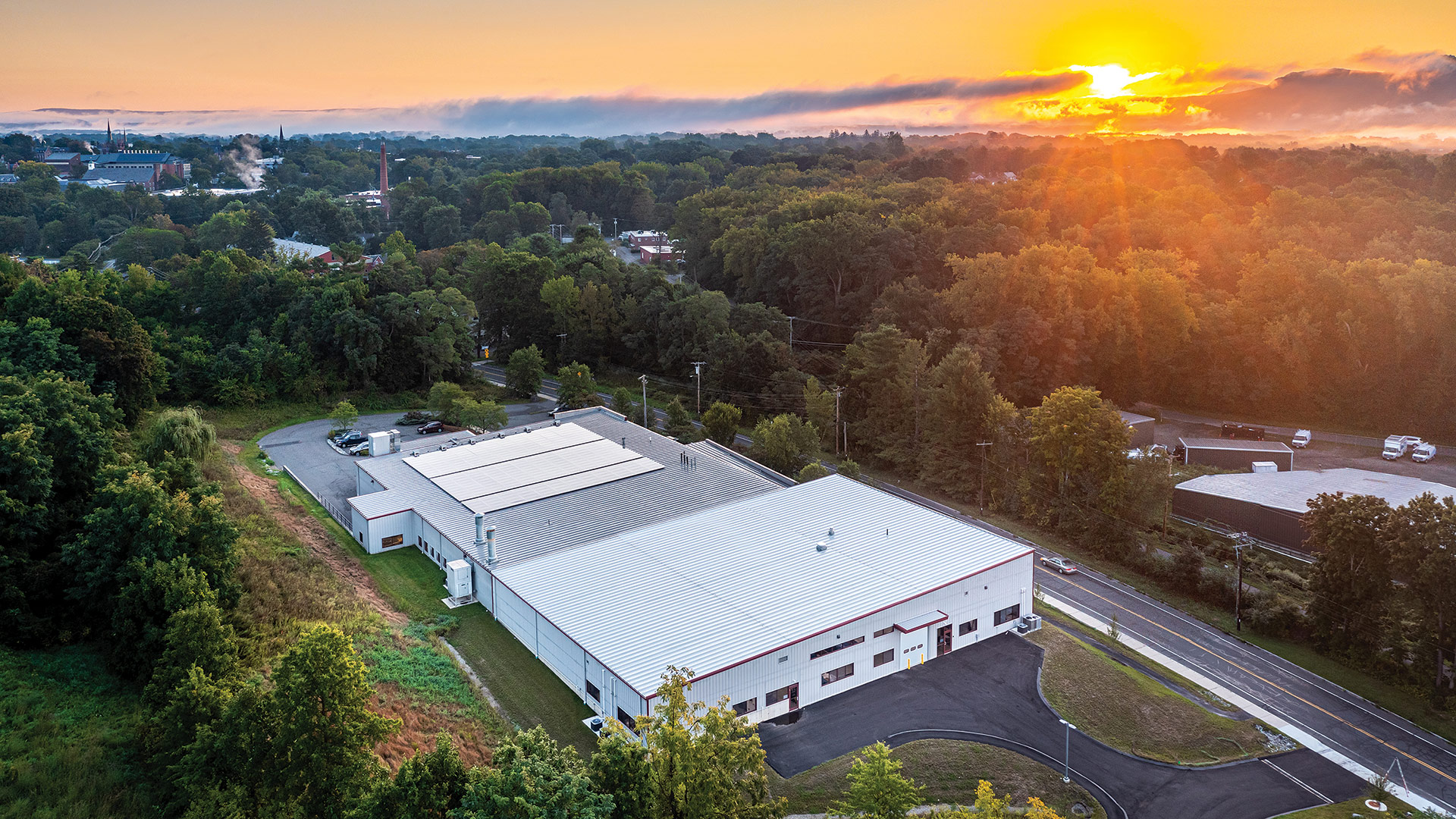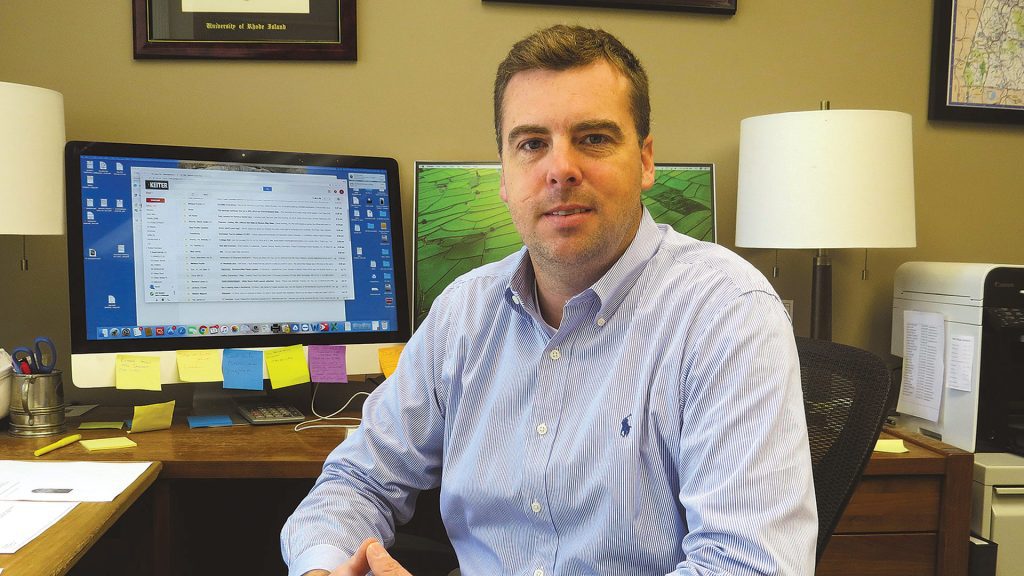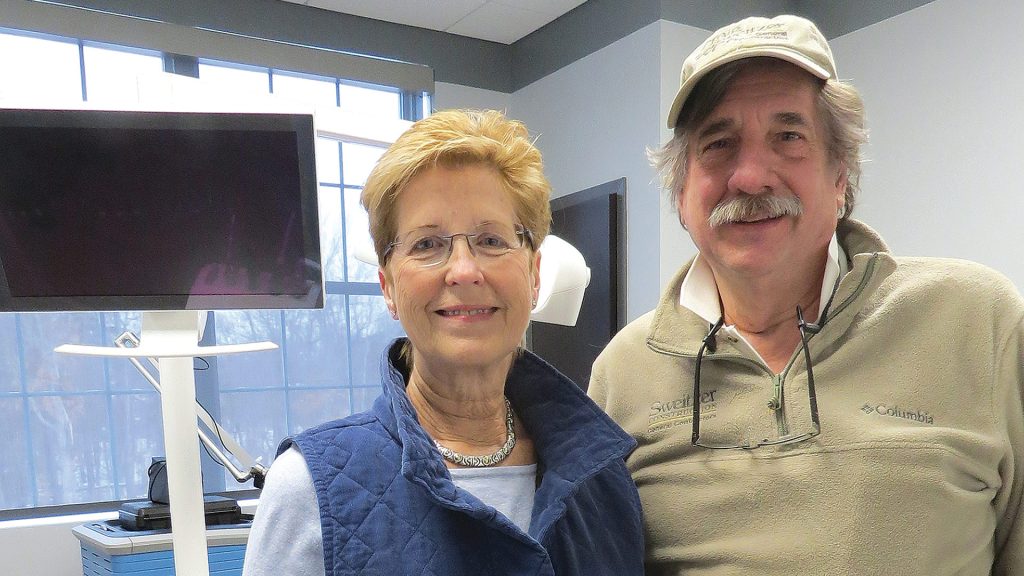More Demand Than Supply

Keiter recently completed a 14,000-square-foot addition to VCA Inc. in Northampton. (Photo by Leigh Chodos)
By now, the phrase ‘supply chain’ has become one of the economic buzzwords of our time, as global shortages and slowdowns of goods, not to mention staffing crunches, have impacted industries ranging from food service and retail to manufacturing and auto sales. The construction industry has been particularly vulnerable to those trends, which is especially unfortunate considering that most builders say the work is there — they just can’t tackle it all until these broader issues begin to stabilize. When they will is anyone’s guess.
Most people have heard about the challenges facing the construction industry these days, Scott Keiter said — workforce shortages and supply-chain issues foremost among them — but it’s helpful, he noted, to understand how they’re really part of one large issue.
“Part of the supply-chain issue is the workforce,” said the president of Keiter, the new name for his company, which now encompasses four divisions: commercial and industrial, residential, site work, and real estate. “But the pandemic affects people, and people are the ones who produce products. I think the demand is out there, but those other things out there are causing a little bit of a bog on the system. This is something I hear from others in construction as well.”
It’s what BusinessWest is hearing, too — that there’s plenty of demand for work, but no one is in a place to take on all they could were the workforce and supply outlooks more stable.
“Demand is a great thing,” Keiter added, “but if the supply chain is already compromised, those things can really put a strain on the system … and we have to work harder to achieve the same results.”
Carol Campbell agreed. “It’s been a year like no other,” the president of Chicopee Industrial Contractors (CIC) said. “I think I’ve said that before, but this time is very different.”
“Demand is a great thing. but if the supply chain is already compromised, those things can really put a strain on the system … and we have to work harder to achieve the same results.”
Indeed, “we are certainly affected by the labor force, or the lack thereof,” she went on. “So when you evaluate your sales or how busy you are, well, if we were at full complement, it would be a different story. We’re at reduced labor teams, so we are busy, but it’s hard to serve all our customers at the level we’re at right now.”
From a supply-chain perspective, CIC is a contractor based in the manufacturing world. “Where we have issues with the supply chain is, if we have a team scheduled to do a project, the installation may take a week or two, then, with 48-hours notice or less, we get a phone call saying the machine hasn’t even hit the dock.

Scott Keiter says the industry is busy, but new challenges make it a different kind of busy than before.
“It’s a scheduling nightmare,” she went on. “I tip my hat to our schedulers, how they keep all the balls in the air and keep all the employees working and customers happy, with all the changes that happen on very quick notice.”
The supply crunch affects both availability and cost, said Craig Sweitzer, co-owner of Sweitzer Construction. “I just got off the phone with someone who needs 12 weeks lead for replacement windows. I’ve never heard of that before. And a lot of materials are unavailable, so we have to search for substitutes.”
Co-owner Pat Sweitzer said she was bidding a project, and a plumber advised her to order a certain piece of equipment needed for the job immediately. “So you ask yourself the question, ‘do we take a chance and order it and expect to get the job?’ These kinds of questions are coming up as well.”
These challenges tend to put contractors in a tough spot, stuck in the middle between customer demands and supply realities.
“Those are real concerns,” Craig said. “At first it sounded like a lot of people complaining, but it truly is an issue. Availability, the cost of materials and shipping, getting stuff shipped to sites … it’s all tricky.”
Links in the Chain
One aspect of the supply-chain issue is trucking, Campbell said, which has impacted her firm on two levels.
“It’s been a nightmare to hire drivers to join our team, then trying to get machines delivered to our facility or to our customer’s facility. They’ll say they’ll be there at noon and may show up at 4 o’clock. So it’s hard because you have to pass some of the cost off, but who’s at fault in all this? It’s a scheduling nightmare, a financial nightmare for customers and vendors. It’s been … quite an interesting year.”
She gave an example of a hard deadline of Dec. 31 to get a machine up and running on a customer’s plant floor. “We’re at the bottom of that chain. It has to come through customs — most are made outside the U.S. — then it has to be piped by the piper, the electrician does his work, then you bring the rigger in, all those dovetail together.”
Keiter said supply shortages and delays are causing some price escalation with materials.
“It’s really causing us to have to look ahead and think about how the disruption and supply chain will affect schedules, and then, of course, the ever-moving pricing with materials is a challenge for not only us as contractors, but for clients and their budgeting. It’s very difficult — the days of just showing up and going at it are gone. We’re having to really get ahead of procurement and also securing tradesman and subcontractors. The industry is busy, but it’s a lot different than it was before.”
Windows and kitchen cabinetry have been especially problematic when it comes to significant timeline increases, Keiter noted. “That said, anything special-order, anything that’s not run-of-the-mill, anything made to order, anything not on a shelf, those seem to be taking longer on average.”
The Construction Products Assoc. (CPA) recently downgraded its forecast for construction growth in 2022 from 6.3% to 4.8% amid what it called a “perfect storm” in the supply chain, Construction Manager magazine reported.
“It’s a scheduling nightmare. I tip my hat to our schedulers, how they keep all the balls in the air and keep all the employees working and customers happy, with all the changes that happen on very quick notice.”
The association warned that supply-chain constraints are now expected to hinder growth well into next year, citing a combination of talent shortages, product availability and cost inflation, driver shortages, the impact of energy-cost increases, and delays at ports as factors in that storm.
“The biggest impacts of the supply constraints are on the small construction firms,” CPA Economics Director Noble Francis said. “Large contractors and major house builders have a greater certainty of demand over the 12- to 18-month horizon and are better able to plan and purchase in advance as well as adjust to changing economic situations. Small firms, however, are more focused on flexibility and have less visibility over demand going forward. Plus, they have less ability and resource to plan and purchase in advance.”
But the workforce issues remain problematic as well.

Pat and Craig Sweitzer say supply-chain issues affect both availability and cost of materials, and, therefore, both project scheduling and budgeting.
“We were fortunate in that regard,” Keiter said. “We have a very strong, committed team of employees. However, you can see in the workforce in general, whether it’s vendors, subcontractors, or others, I think the pandemic has really shaken things up.”
It’s an issue that worries Campbell moving forward.
“I feel optimistic in our conversations with customers, and we’re booking into 2022, but I have great concerns about the labor force,” she told BusinessWest. “We pay well, and our benefits compare with a state or municipality. And we can’t attract a skilled workforce.
“We’ve always had issues hiring skilled labor just because, coming out of high school, it requires quite a few years of apprenticing. But nothing like we have right now. Over COVID, we had a few people age out, who said, ‘that’s what it took for me to hang it up’ — some people, quite honestly, I just didn’t expect. I understand why they retired, but I think COVID gave them that push.”
Craig Sweitzer said his firm has been navigating workforce issues well, although that did necessitate a lot of personal time to deal with COVID-related issues. “All in all, we survived intact.”
However, the industry’s worker crunch has made clearer the importance of keeping workers happy. “We’ve rolled quite a bit of our profits out of our pockets and put them to use to help our employees and subs. We stress that above and beyond profitability,” he said. “It’s easier to run a business when everybody’s on the same team, pushing in the same direction. So we’re happy to forgo a little profit to have that.”
Pat Sweitzer said she understands the strain workers in all industries have felt over the past two years.
“We have been really fortunate to have our employees and our subcontracting team with us for many, many years. In terms of our employees, they have had family obligations they had to meet during COVID, such as homeschooling and schools being closed down, kids at home. So we have accommodated their needs, and they have stayed with us through the whole year and a half, and we are really fortunate and glad that they have stayed with us all this time; they bring a level of knowledge and skill to our projects that really serve our company and our customers well.”
Optimism Ahead
As noted earlier, despite the industry-wide, often global challenges, area firms have stayed busy.
“For us, this year has been a really good year,” Pat said. “Part of that is thanks to Adaptas Solutions in Palmer, which is a manufacturer in the Palmer Industrial Park that had renovations of five high-tech buildings.
“We were building a clean room and upgrading their facilities,” she added. “It really sustained us and positioned them well as a company. It was a good, steady year for us.”
Carol Campbell
“It’s been a nightmare to hire drivers to join our team, then trying to get machines delivered to our facility or to our customer’s facility. They’ll say they’ll be there at noon and may show up at 4 o’clock. So it’s hard because you have to pass some of the cost off, but who’s at fault in all this?”
The firm’s niches in medical and dental facilities continue top be strong as well, she added, and it’s starting to edge into an area with significant growth potential: cannabis.
“One thing I’m grateful about is that we have our bread and butter, our dental and medical work, and now that technical capability and knowledge we’ve developed in those industries is transferring over to the cannabis industry,” she told BusinessWest. “So we have a lot of work coming up, including projects that we hope will be coming through in the cannabis industry.”
Keiter is similarly pleased with his firm’s pipeline.
“We work with a lot of the institutions of higher learning, and those projects continue. We’re also working with a number of nonprofit organizations. We had a pretty good run in 2021. We built a number of new homes, got a lot of residential construction. All the various parts of our business are moving in the right direction.”
In other words, business is booming. That’s the big, positive takeaway amid all the industry concerns about workforce and supply — and how they are, in many ways, the same issue.
“It’s busy, and things are moving. Demand is there,” Keiter said. “We’re here and working hard, and we’re going to get through it. Everyone in construction is hopeful that we’ll start to work our way out of the pandemic and maybe stabilize a little bit.”
Craig Sweitzer agreed. “We’re bidding like mad, and I’m assuming there’s still a lot of optimism out there, so we can only hope to stay as busy as we’ve been. In spite of all the craziness, there does seem to be a lot of optimism out there.”
Joseph Bednar can be reached at [email protected]






